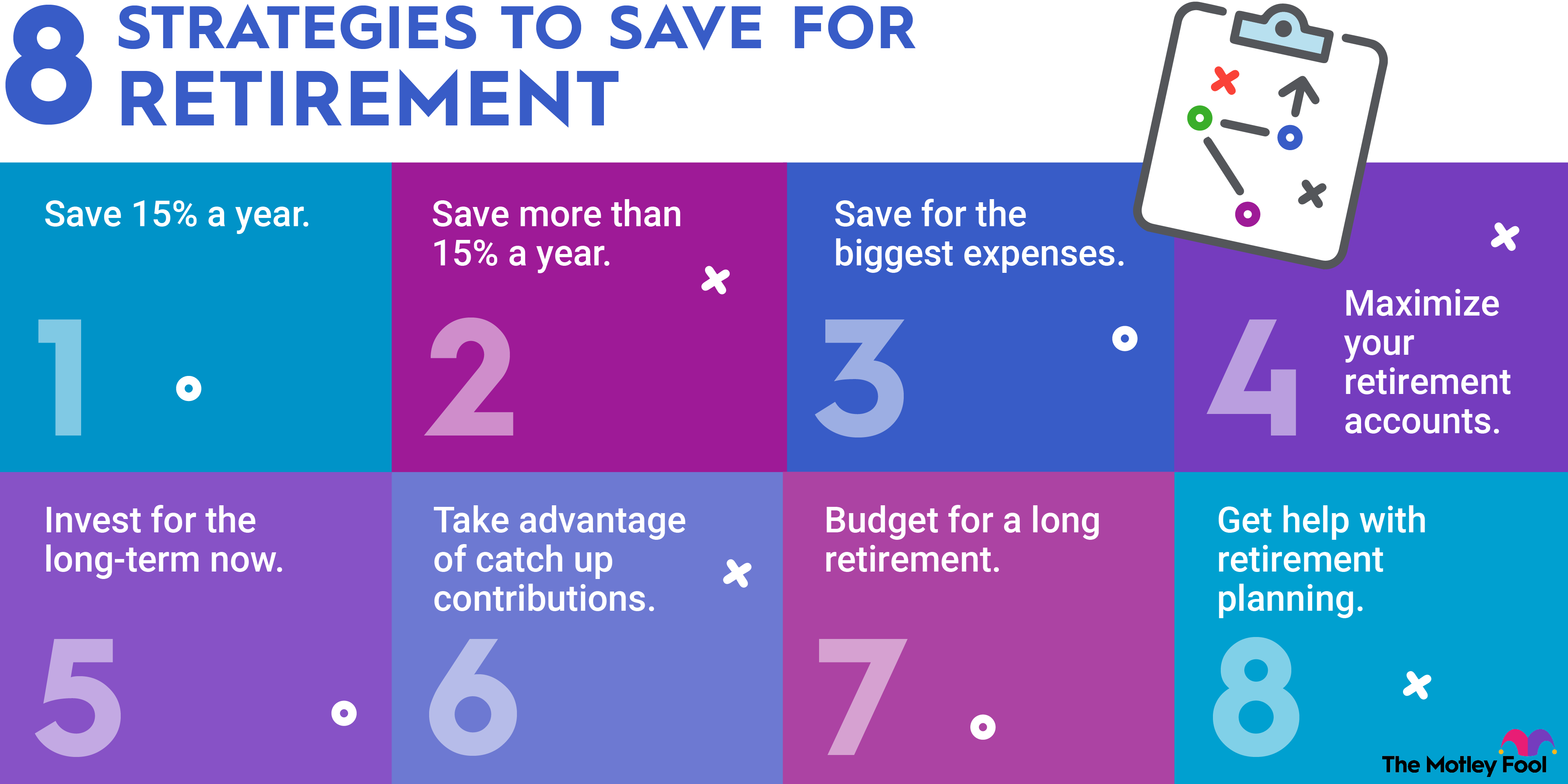
YEAR | MEDIAN RETIREMENT ACCOUNT SAVINGS | MEAN RETIREMENT ACCOUNT SAVINGS |
|---|---|---|
1989 | $25,361 | $87,721 |
1992 | $29,008 | $92,160 |
1995 | $32,902 | $110,889 |
1998 | $43,760 | $139,083 |
2001 | $49,217 | $175,587 |
2004 | $55,309 | $193,412 |
2007 | $64,395 | $210,804 |
2010 | $60,095 | $233,358 |
2013 | $75,097 | $256,023 |
2016 | $74,002 | $282,103 |
2019 | $75,348 | $295,743 |
2022 | $87,000 | $333,945 |
YEAR | YOUNGER THAN 35 | 35 TO 44 | 45 TO 54 | 55 TO 64 | 65 TO 74 | OLDER THAN 74 |
|---|---|---|---|---|---|---|
1989 | $9,222 | $23,056 | $39,195 | $55,334 | $34,584 | $36,889 |
1992 | $9,324 | $18,855 | $58,015 | $62,159 | $41,439 | $58,015 |
1995 | $11,613 | $28,257 | $54,192 | $61,934 | $56,127 | $45,483 |
1998 | $12,763 | $36,467 | $63,817 | $85,697 | $69,287 | $54,700 |
2001 | $11,718 | $47,878 | $80,355 | $92,073 | $100,444 | $80,355 |
2004 | $17,284 | $43,996 | $87,206 | $130,416 | $125,702 | $47,138 |
2007 | $13,738 | $52,947 | $90,153 | $143,100 | $110,187 | $50,085 |
2010 | $14,477 | $42,340 | $81,948 | $136,579 | $136,579 | $73,753 |
2013 | $15,274 | $54,350 | $110,736 | $132,375 | $189,652 | $87,825 |
2016 | $14,825 | $45,635 | $101,136 | $148,005 | $155,651 | $148,005 |
2019 | $15,070 | $69,552 | $115,921 | $155,334 | $190,110 | $96,214 |
2022 | $18,880 | $45,000 | $115,000 | $185,000 | $200,000 | $130,000 |
Year | YOUNGER THAN 35 | 35-44 | 45-54 | 55-64 | 65-74 | 75 OR OLDER |
|---|---|---|---|---|---|---|
1989 | $21,121 | $68,589 | $120,455 | $143,664 | $113,495 | $76,011 |
1992 | $27,713 | $56,747 | $145,106 | $147,121 | $112,365 | $115,291 |
1995 | $36,499 | $69,045 | $169,122 | $181,637 | $162,292 | $114,930 |
1998 | $41,191 | $95,288 | $164,843 | $261,198 | $188,489 | $169,358 |
2001 | $31,585 | $108,605 | $212,865 | $332,177 | $292,978 | $212,370 |
2004 | $39,837 | $107,062 | $223,076 | $340,125 | $328,150 | $186,530 |
2007 | $35,744 | $114,652 | $219,847 | $387,018 | $382,057 | $151,134 |
2010 | $36,698 | $115,127 | $235,228 | $397,523 | $421,537 | $237,306 |
2013 | $36,772 | $143,211 | $222,841 | $362,765 | $563,869 | $302,404 |
2016 | $40,057 | $123,529 | $266,121 | $460,103 | $441,990 | $414,877 |
2019 | $34,970 | $152,959 | $295,273 | $473,442 | $493,897 | $414,903 |
2022 | $49,127 | $141,517 | $313,220 | $537,563 | $609,229 | $462,411 |
Age | Have retirement account | Retirement savings on track |
|---|---|---|
18–29 | 39% | 23% |
30–44 | 67% | 35% |
45–59 | 74% | 42% |
60+ | 79% | 50% |
Overall | 67% | 35% |
Federal Reserve
Assets | Non-retirees | Retirees | Overall |
|---|---|---|---|
Tax preferred retirement account (401(k), IRA) | 61% | 59% | 61% |
Define benefit pension through employer | 21% | 51% | 29% |
Tax preferred retirement account or pension | 64% | 74% | 67% |
Own home | 58% | 82% | 64% |
Savings or money market account or CD | 55% | 70% | 59% |
Stocks, bonds, ETFs, or mutual funds outside retirement account | 31% | 46% | 35% |
Cash value in life insurance policy | 22% | 31% | 25% |
Business or real estate | 9% | 16% | 11% |
Have tax-preferred retirement account, pension, or other assets listed above | 77% | 87% | 79% |
YEAR | NO HIGH SCHOOL DIPLOMA | HIGH SCHOOL DIPLOMA | SOME COLLEGE | COLLEGE DEGREE |
|---|---|---|---|---|
1989 | $23,056 | $18,445 | $18,445 | $39,195 |
1992 | $14,504 | $20,720 | $24,864 | $47,655 |
1995 | $18,387 | $29,031 | $30,967 | $49,547 |
1998 | $21,880 | $30,632 | $36,467 | $74,392 |
2001 | $16,741 | $30,133 | $35,155 | $93,748 |
2004 | $19,484 | $31,425 | $37,711 | $113,132 |
2007 | $21,465 | $41,499 | $51,516 | $114,480 |
2010 | $22,262 | $34,145 | $40,974 | $122,921 |
2013 | $17,820 | $42,258 | $52,186 | $133,647 |
2016 | $44,401 | $44,401 | $41,935 | $144,304 |
2019 | $23,184 | $46,368 | $47,527 | $137,945 |
2022 | $50,000 | $44,000 | $53,000 | $141,700 |
YEAR | NO HIGH SCHOOL DIPLOMA | HIGH SCHOOL DIPLOMA | SOME COLLEGE | COLLEGE DEGREE |
|---|---|---|---|---|
1989 | $65,117 | $50,546 | $61,224 | $135,605 |
1992 | $32,029 | $57,791 | $56,973 | $142,927 |
1995 | $41,686 | $71,209 | $86,919 | $173,081 |
1998 | $41,986 | $74,017 | $92,712 | $238,444 |
2001 | $61,022 | $83,101 | $112,592 | $290,032 |
2004 | $48,864 | $93,747 | $120,483 | $312,250 |
2007 | $75,358 | $95,819 | $134,231 | $348,275 |
2010 | $48,138 | $103,337 | $123,712 | $389,823 |
2013 | $50,149 | $110,774 | $151,949 | $396,430 |
2016 | $164,632 | $120,988 | $158,320 | $425,872 |
2019 | $78,491 | $138,924 | $158,209 | $441,872 |
2022 | $79,983 | $141,899 | $177,831 | $476,375 |

YEAR | WHITE, NON-HISPANIC | BLACK, NON-HISPANIC | HISPANIC | OTHER |
|---|---|---|---|---|
1989 | $27,667 | $13,834 | $9,914 | $14,364 |
1992 | $31,080 | $11,396 | $13,468 | $41,439 |
1995 | $35,031 | $15,483 | $23,225 | $30,967 |
1998 | $47,407 | $20,057 | $20,057 | $36,467 |
2001 | $58,927 | $14,230 | $16,741 | $45,200 |
2004 | $64,422 | $23,569 | $23,569 | $50,281 |
2007 | $75,843 | $37,206 | $24,327 | $45,220 |
2010 | $73,753 | $24,584 | $24,584 | $53,266 |
2013 | $96,735 | $24,184 | $20,493 | $55,368 |
2016 | $94,970 | $30,464 | $28,368 | $64,135 |
2019 | $92,736 | $40,572 | $35,935 | $54,483 |
2022 | $100,000 | $39,000 | $55,600 | $60,000 |
YEAR | WHITE, NON-HISPANIC | BLACK, NON-HISPANIC | HISPANIC | OTHER |
|---|---|---|---|---|
1989 | $92,433 | $42,924 | $56,849 | $72,417 |
1992 | $98,974 | $40,657 | $32,294 | $100,715 |
1995 | $119,488 | $43,198 | $74,583 | $101,175 |
1998 | $147,543 | $58,634 | $83,160 | $166,548 |
2001 | $196,225 | $53,981 | $67,946 | $165,462 |
2004 | $214,868 | $93,842 | $62,133 | $136,315 |
2007 | $240,462 | $97,768 | $92,995 | $118,183 |
2010 | $264,388 | $72,148 | $89,290 | $200,846 |
2013 | $301,164 | $71,666 | $50,430 | $168,010 |
2016 | $321,811 | $92,173 | $118,689 | $257,232 |
2019 | $341,030 | $126,513 | $124,044 | $225,316 |
2022 | $380,333 | $117,527 | $120,318 | $257,358 |
Race/ethnicity | Any retirement savings | Retirement savings on track |
|---|---|---|
Asian | 77% | 40% |
White | 57% | 25% |
Black | 51% | 21% |
Hispanic | 52% | 46% |
YEAR | LESS THAN 25TH PERCENTILE | 25TH TO 49.9TH PERCENTILE | 50TH TO 74.9TH PERCENTILE | 75TH TO 89.9TH PERCENTILE | 90TH TO 100TH PERCENTILE |
|---|---|---|---|---|---|
1989 | $2,306 | $8,531 | $23,056 | $57,640 | $110,668 |
1992 | $2,072 | $8,702 | $27,557 | $60,709 | $155,398 |
1995 | $2,323 | $13,935 | $31,741 | $67,740 | $193,543 |
1998 | $3,829 | $14,769 | $51,053 | $109,400 | $233,387 |
2001 | $3,348 | $12,555 | $50,222 | $133,925 | $334,813 |
2004 | $4,714 | $18,384 | $53,423 | $152,414 | $421,102 |
2007 | $4,293 | $21,465 | $71,550 | $171,720 | $453,341 |
2010 | $6,829 | $16,390 | $55,998 | $181,650 | $564,072 |
2013 | $6,110 | $15,274 | $66,187 | $210,017 | $572,775 |
2016 | $5,303 | $18,501 | $64,135 | $244,207 | $778,257 |
2019 | $5,448 | $22,025 | $67,929 | $222,567 | $811,444 |
2022 | $6,000 | $22,380 | $80,000 | $269,000 | $900,000 |
YEAR | LESS THAN 25TH PERCENTILE | 25TH TO 49.9TH PERCENTILE | 50TH TO 74.9TH PERCENTILE | 75TH TO 89.9TH PERCENTILE | 90TH TO 100TH PERCENTILE |
|---|---|---|---|---|---|
1989 | $5,354 | $13,258 | $40,460 | $90,085 | $261,816 |
1992 | $4,458 | $13,721 | $40,054 | $88,211 | $303,048 |
1995 | $7,090 | $20,398 | $43,835 | $112,391 | $384,914 |
1998 | $7,938 | $22,852 | $66,602 | $143,541 | $485,027 |
2001 | $6,274 | $23,433 | $72,196 | $190,312 | $635,642 |
2004 | $8,206 | $26,750 | $75,867 | $211,799 | $684,930 |
2007 | $10,340 | $30,604 | $92,516 | $227,178 | $782,674 |
2010 | $15,741 | $24,964 | $77,100 | $227,261 | $876,353 |
2013 | $13,370 | $23,536 | $87,611 | $245,776 | $919,568 |
2016 | $13,335 | $26,880 | $89,760 | $284,464 | $1,077,011 |
2019 | $13,090 | $31,913 | $91,197 | $282,299 | $1,097,003 |
2022 | $12,739 | $33,851 | $106,233 | $328,642 | $1,296,683 |
Pension
Source of income in the past 12 months among retirees | Retirees age 65 or older | All retirees |
|---|---|---|
Social Security (including Old-Age and Disability Insurance) | 92% | 77% |
Pension | 64% | 56% |
Interest, dividends, or rental income | 52% | 48% |
Wages, salaries, or self-employment | 26% | 33% |
Cash transfers, other than Social Security | 5% | 8% |
Race/ethnicity | 61 or earlier | 62 to 64 | 65+ |
|---|---|---|---|
White | 48% | 24% | 27% |
Black | 56% | 23% | 17% |
Hispanic | 65% | 19% | 15% |
All | 51% | 23% | 24% |
About the Author
The Motley Fool has a disclosure policy.